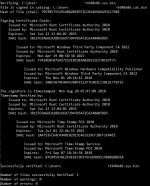- May 25, 2020
- 293
HI MalwareTips.
I was grabbing the install files for my new mobo but my AVs keep blocking this audio driver.
The direct link is hxxp://drivers.maxsun.com.cn/MB/driver/VA1.80/network/realtek/network_Realtek_w10_64(.)exe
What do you think?
I was grabbing the install files for my new mobo but my AVs keep blocking this audio driver.
The direct link is hxxp://drivers.maxsun.com.cn/MB/driver/VA1.80/network/realtek/network_Realtek_w10_64(.)exe
What do you think?
Last edited by a moderator:


